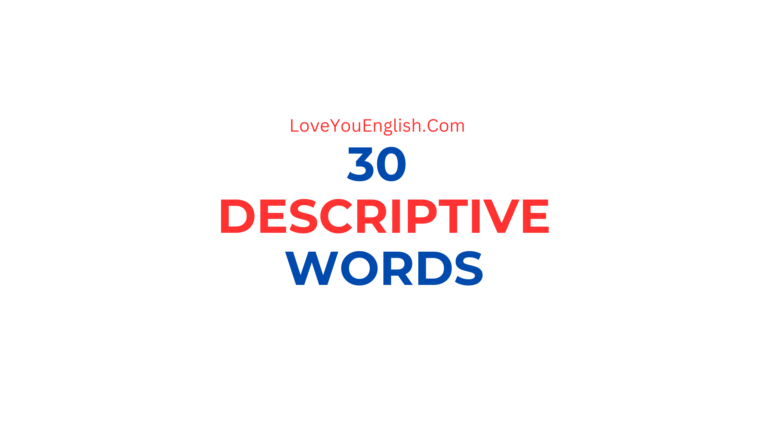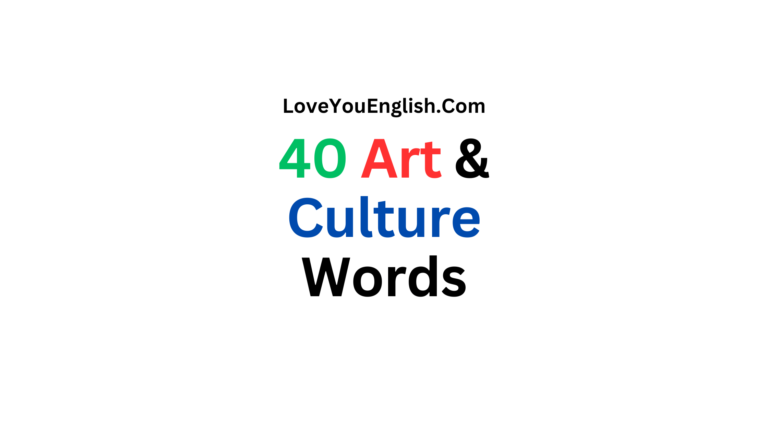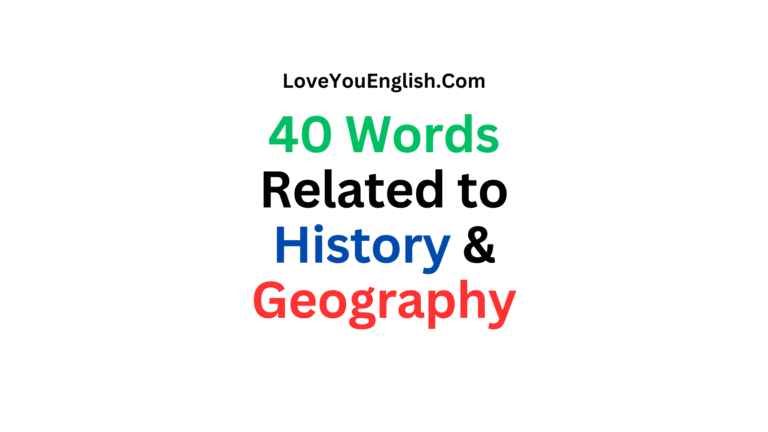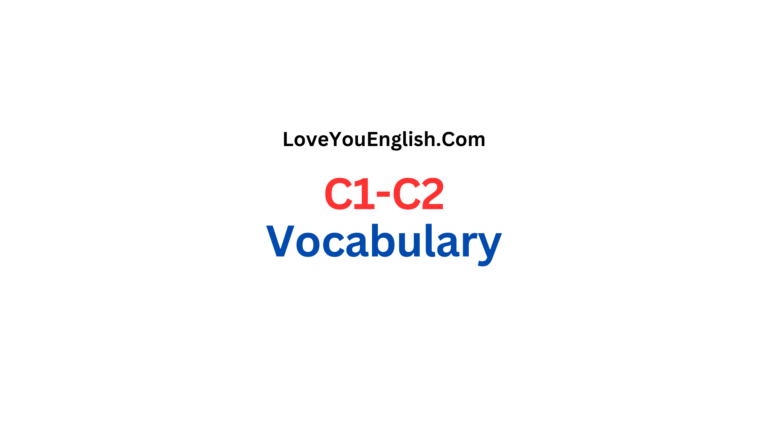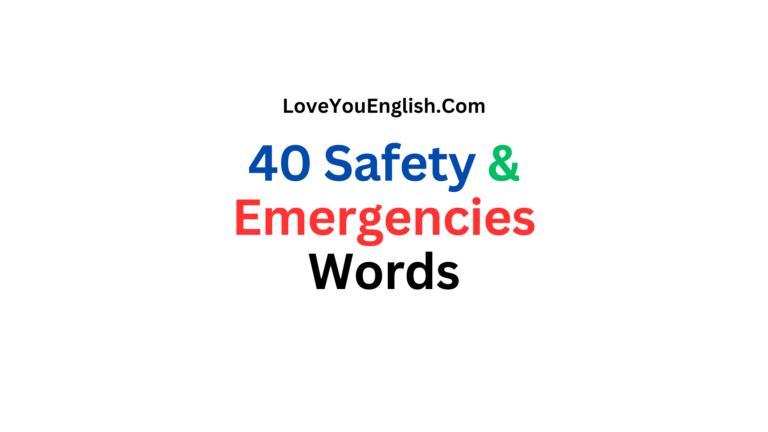English Words to Describe Art and Creativity
Art and creativity are super important ways for people to express themselves, and they come in many different forms, styles, and feelings.
Whether you’re an artist, a student, or just someone who loves art, knowing the right words can help you share your thoughts and emotions better.
In this post, we will look at different words and phrases that describe various parts of art and creativity, so you can talk about your opinions and feelings about artworks, performances, and creative activities more easily.
1. Types of Art
Art can be categorized into various forms, each with its own characteristics and styles.
Here are some words to help you describe different types of art:
Visual Art
- Painting: The art of applying pigment to a surface to create an image.
- Drawing: Creating images using lines and marks, often with pencils, charcoal, or ink.
- Sculpture: Three-dimensional art created by shaping materials like clay, stone, or metal.
- Photography: Capturing images using a camera, which can evoke emotions and tell stories.
Performing Arts
- Dance: The art of movement, often expressing emotions and stories through body language.
- Theater: A collaborative art form that involves acting, stagecraft, and storytelling.
- Music: The art of sound, encompassing a variety of genres and styles that convey feelings and ideas.
Literary Arts
- Poetry: A form of literary art that uses rhythm, imagery, and metaphor to express emotions and ideas.
- Prose: Written language in its ordinary form, often used in storytelling and essays.
Design and Craft
- Graphic Design: The art of visual communication through typography, imagery, and layout.
- Crafting: Creating handmade items, such as pottery, jewelry, or textiles, often emphasizing skill and creativity.
2. Describing Techniques and Styles
Understanding different techniques and styles can enrich your appreciation of art.
Here are some words to help you describe various artistic methods:
Techniques
- Abstract: Art that does not represent recognizable subjects, focusing instead on colors, shapes, and forms.
- Realism: A style that aims to depict subjects as they appear in real life.
- Impressionism: A style that captures the effects of light and atmosphere, often using quick brush strokes.
- Surrealism: Art that combines dream-like elements with reality, often challenging perceptions.
- Mixed Media: Combining different materials and techniques in one artwork.
Styles
- Minimalist: A style that emphasizes simplicity and the use of minimal elements.
- Baroque: An elaborate and dramatic style, characterized by rich colors and intricate details.
- Cubism: A style that represents subjects from multiple viewpoints, often using geometric shapes.
- Pop Art: A movement that incorporates popular culture and mass media into art, often using bright colors and bold imagery.
3. Expressing Emotions and Reactions
Art evokes a wide range of emotions and reactions.
Here are some words to help you articulate your feelings:
Positive Reactions
- Inspiring: Art that motivates or encourages creativity in others.
- Uplifting: Art that brings joy or elevates one’s mood.
- Captivating: Art that holds your attention and engages your interest.
- Enchanting: Art that is delightful and charming, often evoking a sense of wonder.
Neutral Reactions
- Thought-provoking: Art that stimulates critical thinking or reflection.
- Mediocre: Art that is average and lacks distinctive qualities.
- Eclectic: Art that draws from a variety of styles and sources, creating a diverse composition.
Negative Reactions
- Disappointing: Art that fails to meet expectations.
- Confusing: Art that is difficult to understand or interpret.
- Chaotic: Art that appears disorganized or overwhelming, often lacking harmony.
More cool topics:
- 100+ English Collocations to Sound More Fluent
- 30 Common English Collocations You Should Know
- Mastering English Collocation Sentences
- Everyday English Expressions for Daily Use
4. Describing Colors and Visual Elements
Color is an essential element of art, affecting mood and perception.
Here are some words to describe colors and visual elements:
Colors
- Vibrant: Bright and full of life; colors that are intense and eye-catching.
- Muted: Soft and subdued colors that are not overly bright.
- Monochromatic: Using one color in various shades and tones.
- Pastel: Soft, light colors that create a gentle, calming effect.
Visual Elements
- Texture: The surface quality of an artwork, which can be rough, smooth, or varied.
- Composition: The arrangement of elements within an artwork, influencing balance and harmony.
- Contrast: The difference between light and dark, or between different colors, creating visual interest.
- Proportion: The relationship in size between different parts of an artwork.
5. Discussing Creativity
Creativity is the driving force behind artistic expression.
Here are words to describe creative processes and thinking:
Creative Processes
- Innovative: Introducing new ideas and methods; original and inventive.
- Imaginative: The ability to think creatively and inventively; often leading to unique concepts.
- Visionary: Having a clear idea of what could be created or achieved; forward-thinking.
- Experimental: Trying out new techniques or styles; willing to take risks in the creative process.
Creative Thinking
- Original: Unique and not derived from something else; showcasing individual expression.
- Resourceful: Able to find quick and clever ways to solve problems in creative endeavors.
- Curious: Eager to explore and learn, leading to innovative ideas and concepts.
- Intuitive: Having a natural ability to understand or know something without conscious reasoning, often guiding creative choices.
6. Words for Art Appreciation
When discussing and appreciating art, certain terms can enhance your conversations.
- Aesthetic: The principles concerned with the nature and appreciation of beauty in art.
- Masterpiece: An outstanding work of art, often regarded as a significant achievement.
- Exhibition: A public display of art in a gallery or museum.
- Gallery: A space where art is displayed and can be viewed by the public.
Conclusion
Having a strong vocabulary to talk about art and creativity can really help you understand and enjoy different types of artistic expression.
Whether you’re chatting about paintings, dance, music, or the creative process itself, the words you pick can change how you share your thoughts and feelings.
When you interact with art—whether you’re making it or just looking at it—using these words can make your ideas and emotions come alive.
Art isn’t only about what you see; it’s also about what you feel, and the right words can help you explain that experience.
By building up your vocabulary related to art and creativity, you’ll not only get better at communicating but also feel more connected to the artistic world around you.
Keep in mind that every artwork has its own story, and with the right words, you can join in on that story.


